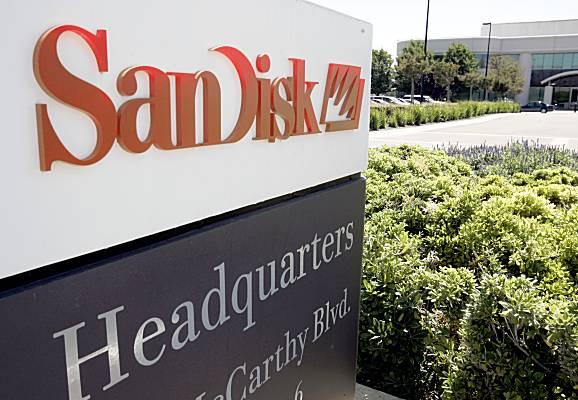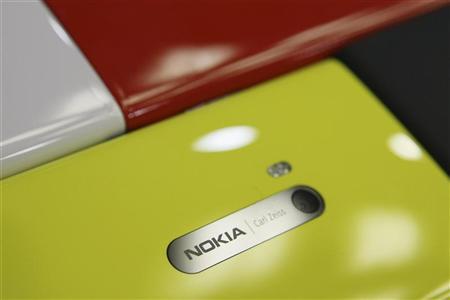 SanDisk Corp’s modest revenue outlook disappointed investors looking for a rebound in memory chips widely used in smartphones and tablets, sending its shares lower.
SanDisk Corp’s modest revenue outlook disappointed investors looking for a rebound in memory chips widely used in smartphones and tablets, sending its shares lower.
Like other memory chipmakers, SanDisk has been hurt in recent quarters by a drop in prices for NAND flash chips used in smartphones, cameras, storage drives and tablets to store data such as movies and photos.
The company’s quarterly results on Wednesday beat Wall Street’s expectations and Chief Executive Sanjay Mehrotra told analysts on a conference call he expects improved NAND pricing this year, giving SanDisk’s stock a brief boost.
But Mehrotra said SanDisk will increase its supply of NAND by less than the industry average in 2013, and the company’s revenue forecast for the first quarter fell short of Wall Street’s estimates, prompting a selloff.
“The problem is you’re just not getting the double whammy,” said RBC Capital analyst Doug Freedman. “You’re looking for not only a growth in average selling prices, but a growth in units, and they’re not forecasting a very big growth in units.”
SanDisk estimated revenue in the March quarter of $1.225 billion to $1.3 billion. Analysts had expected $1.372 billion, according to Thomson Reuters.
The company said its fast-growing solid-state drive business accounted for 10 percent of fourth-quarter revenue. Chief Financial Officer Judy Bruner said solid-state drives would be SandDisk’s biggest growth driver this year, followed by embedded applications.
Solid-state drives, which store data on flash chips and are faster than conventional hard drives, are increasingly being used in Ultrabook thin laptops being promoted by Intel Corp and PC makers. High-end solid-state drives are gaining popularity in corporate data centers.
Some analysts have recently pointed to signs that NAND prices are stabilizing after Japanese chipmaker Toshiba scaled back production last year.
“We think we’re still better than seasonal in pricing because there’s no new supply coming on line. That’s the key metric. Demand will take care of itself,” said Kevin Cassidy, an analyst at Stifel Nicolaus.
Last year Apple Inc, a major purchaser of NAND chips worldwide, accounted for almost 13 percent of SanDisk’s business, Bruner said.
Apple missed revenue expectations for the third straight quarter after sales of its flagship iPhone came in below Wall Street’s targets.
SanDisk’s gross margin in the December quarter improved to 39 percent from 30 percent in the September quarter. For the March quarter, SanDisk expects a gross margin of 38 percent, plus or minus 2 percentage points.
Pacific Crest analyst Monika Garg said investors are adjusting to slower growth in the NAND chip industry after years of explosive expansion.
The chipmaker earned $214 million, or 87 cents per share, in the December quarter, compared to $281 million, or $1.14 per share, in the year-ago period.
Revenue fell 2 percent year over year to $1.54 billion.
Analysts on average were expecting revenue of $1.526 billion in the fourth quarter.
Excluding items, it earned $1.05 a share. Analysts had expected earnings of 76 cents a share.
The company’s shares fell 3.46 percent to $46.00 in extended trade, after closing down 0.63 percent on Nasdaq.
Source : Reuters




































